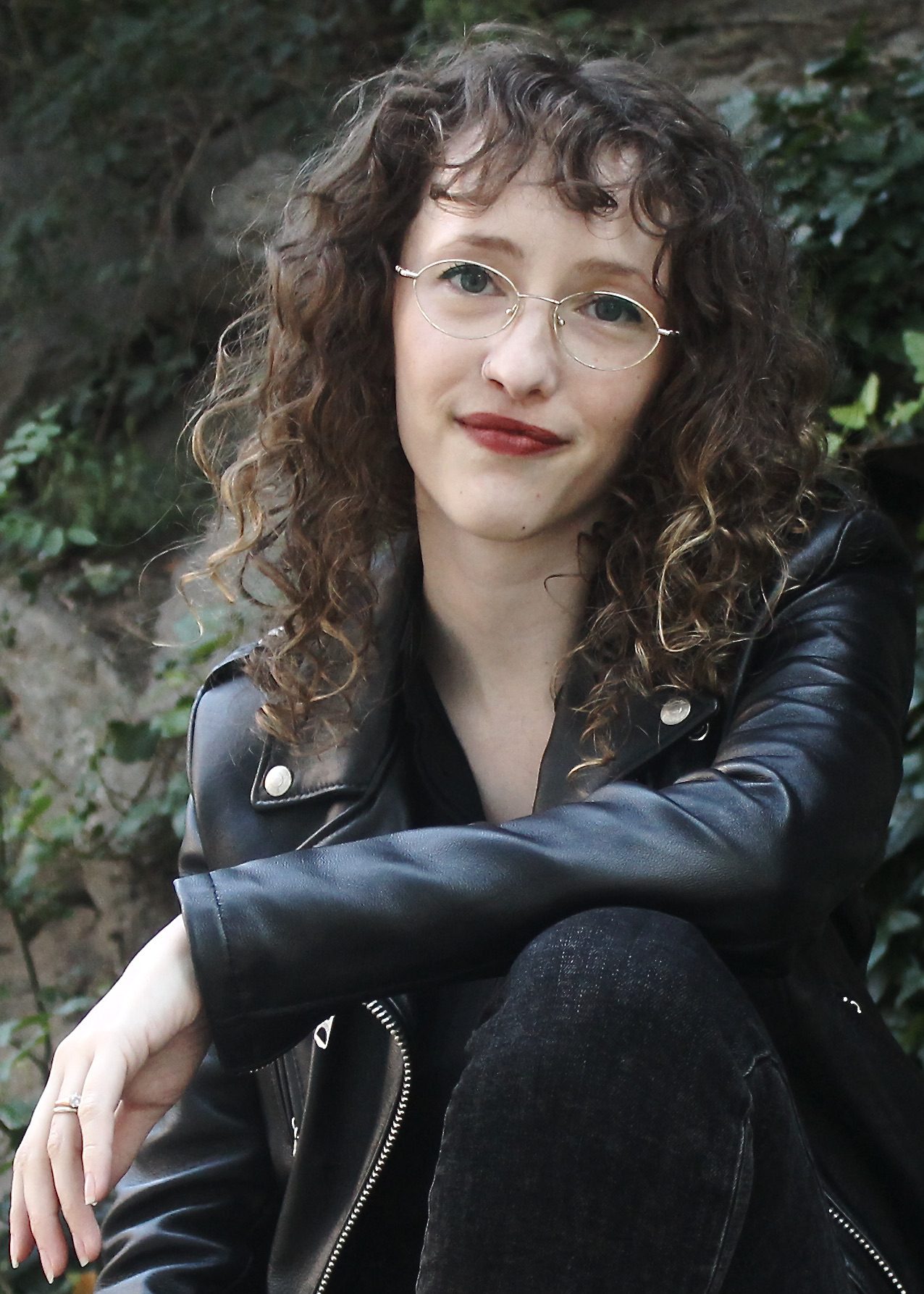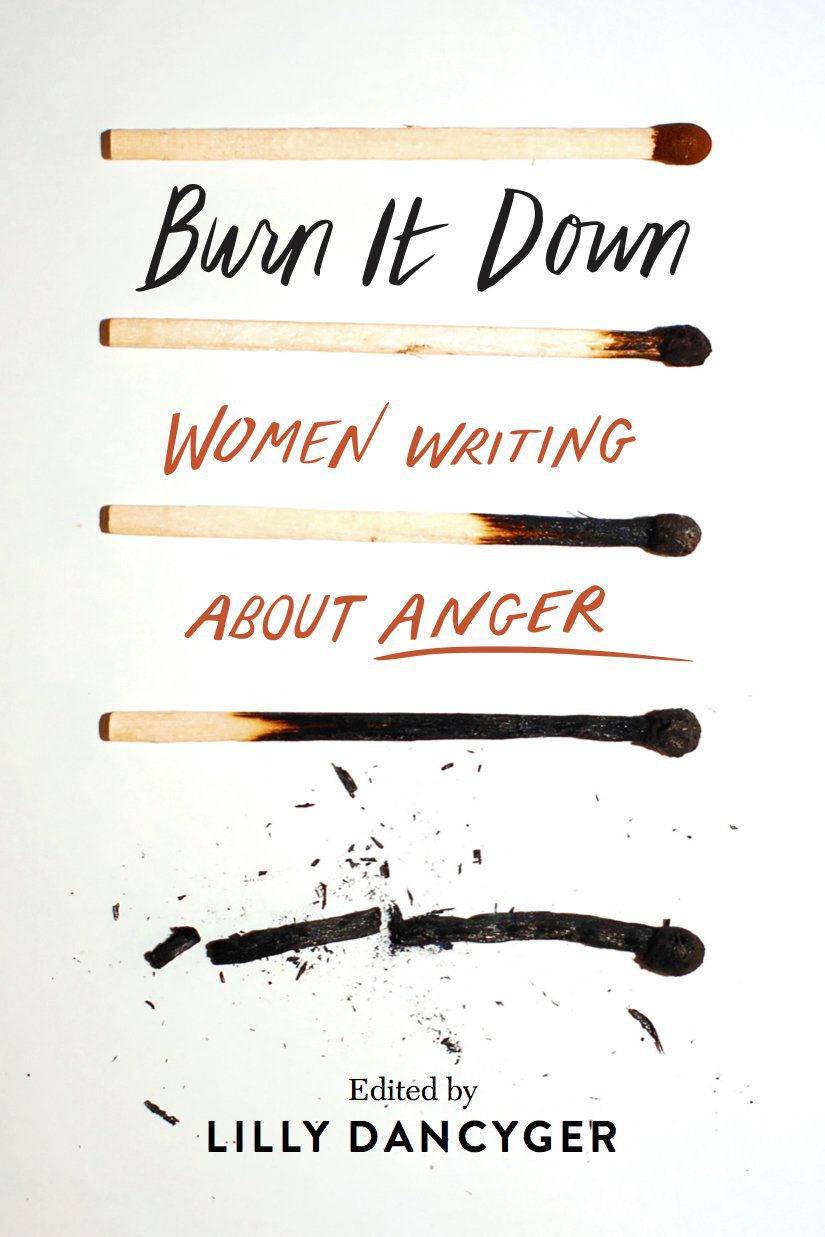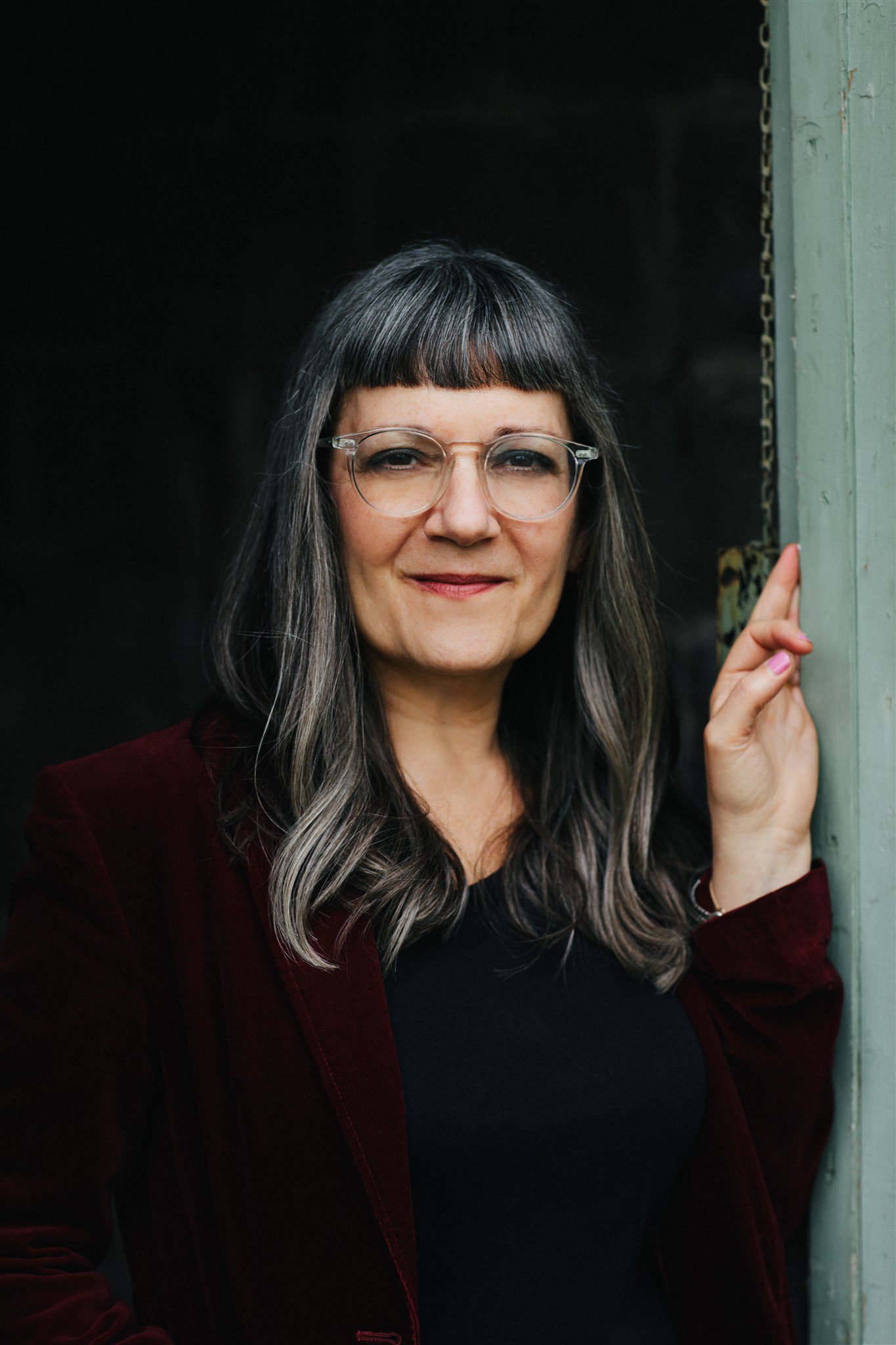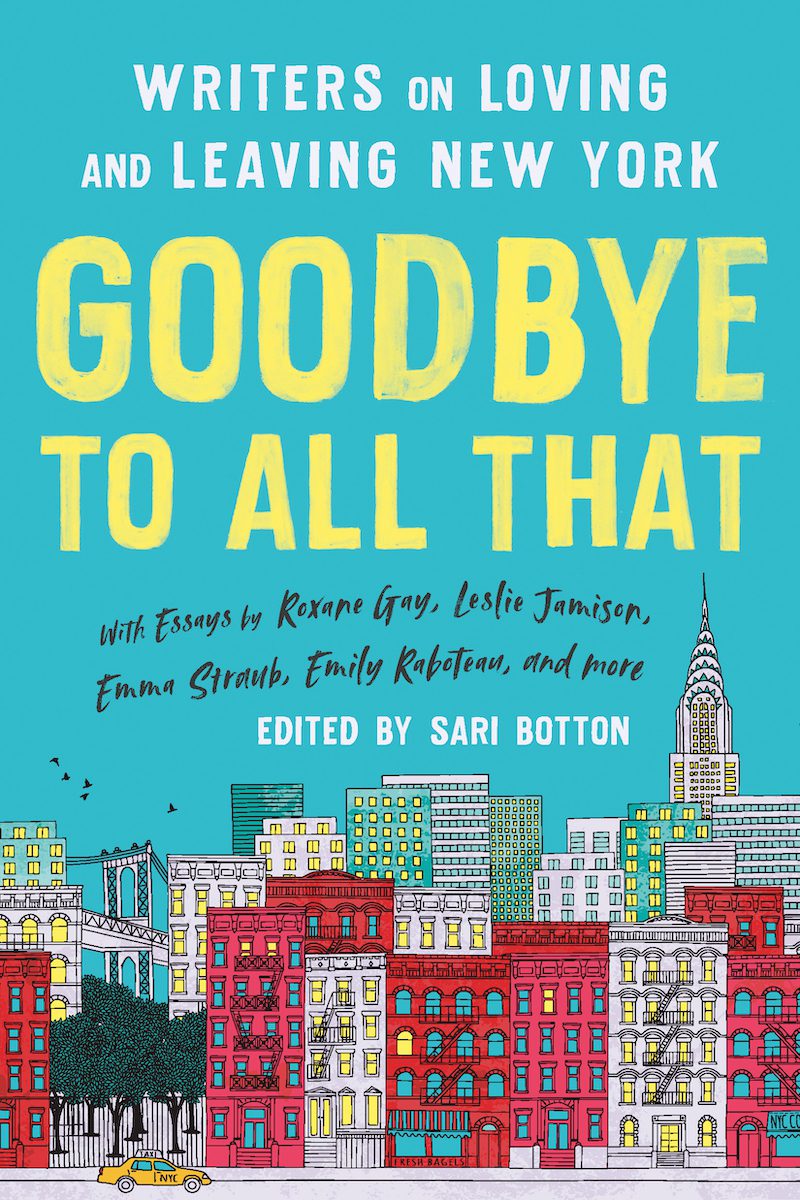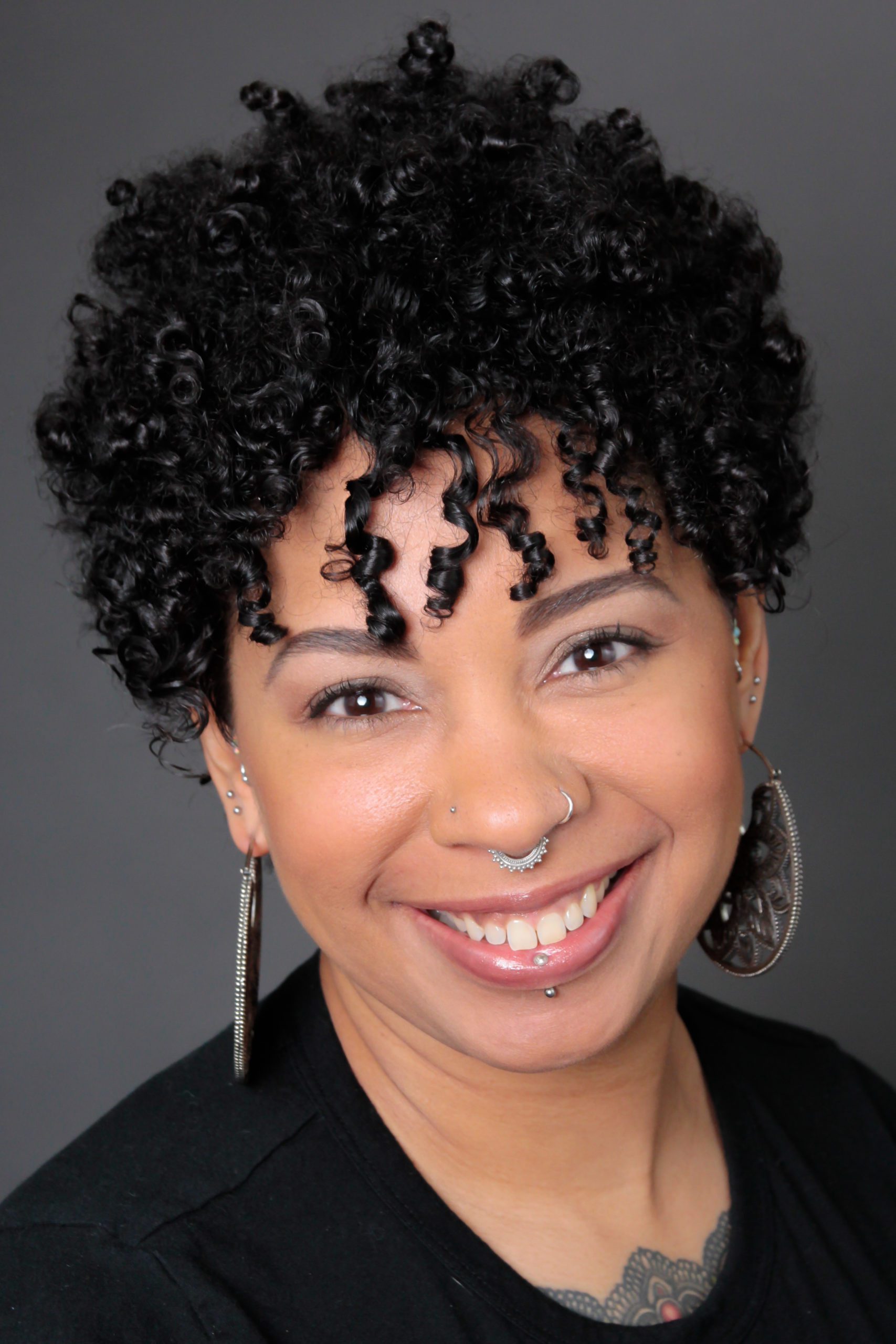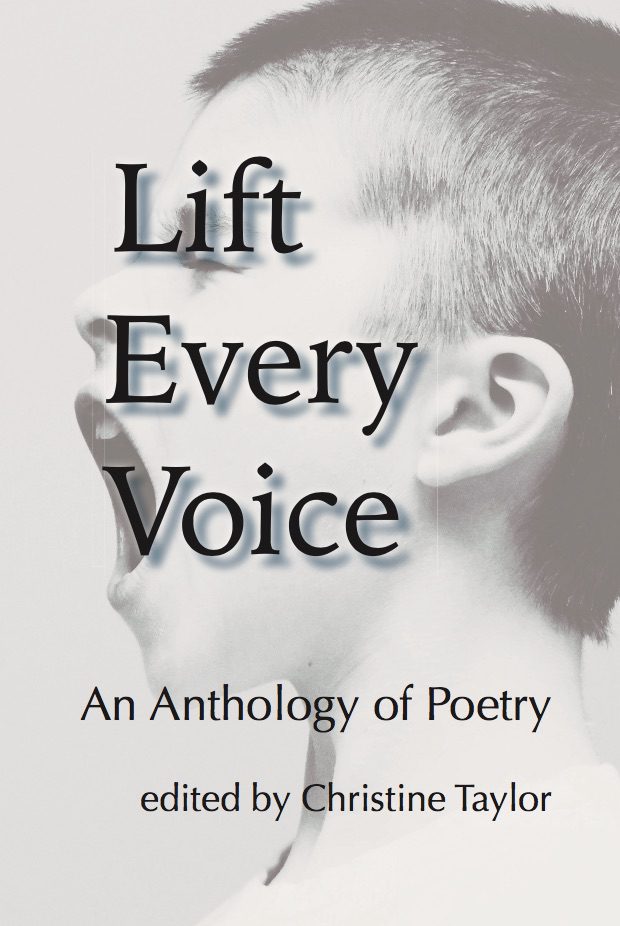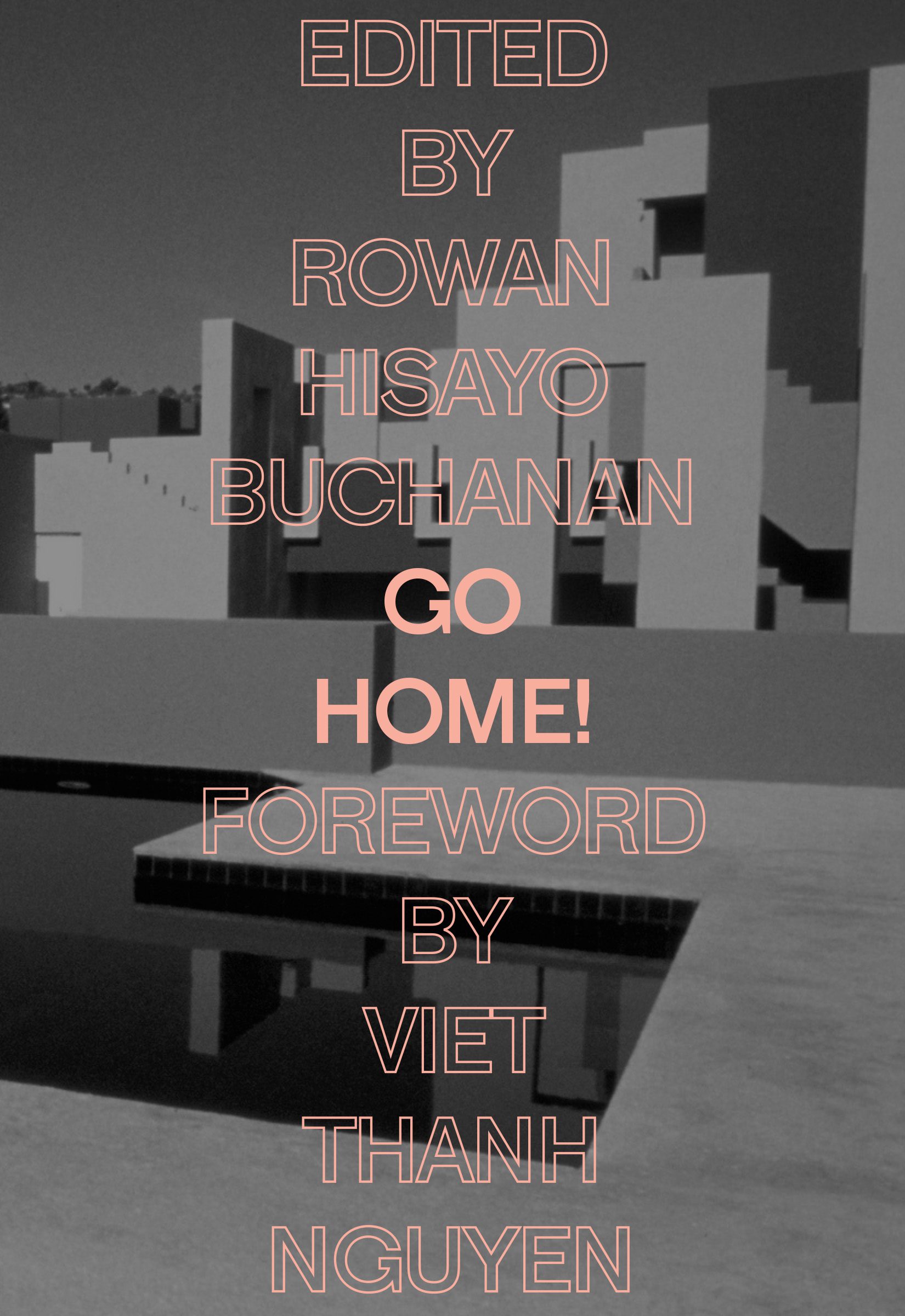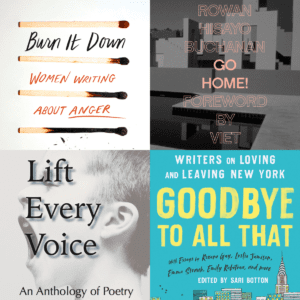
When I was working on my anthology, Burn It Down, I had so many questions: what was an acceptable rate to offer contributors, whether I should solicit work directly or put out calls for submissions, whether there were any conventions or rules about how pieces in the collection should be organized… I was lucky to get advice from friends who had been through this process before, but found very few resources accessible to a newer editor that just laid it all out. I figured out how to create Burn It Down as I went through the process, but it felt a little like reinventing the wheel. So, I decided to put together a discussion with editors of anthologies, across different genres and subject matter, to help demystify the process for aspiring anthology editors.
Here, Rowan Hisayo Buchanan (Go Home!), Christine Taylor (Lift Every Voice), Sari Botton (Goodbye to All That and Never Can Say Goodbye), and I talk about the process of putting together an anthology, from getting publishers on board to finding and paying contributors to and promoting our anthologies, and more.
[This is an expanded version of a discussion that originally took place virtually at AWP 2021. – Ed.]
***
Let’s each talk a little about the book(s) we edited—the focus or topic, the included genres, and basic description.
Sari Botton: I edited two NYC-centric essay collections, Goodbye to All That: Writers on Loving & Leaving NY (Seal Press, 2013), and Never Can Say Goodbye: Writers on Their Unshakable Love for NY (Gallery Books, 2014). A reissue of Goodbye to All That will be out from Seal Press on April 6, with new essays by Leslie Jamison, Emily Raboteau, Lisa Ko, Ada Limón, Danielle A. Jackson, Carolita Johnson, and Rosie Schaap. While their titles are different, both anthologies address the push-pull that New York City imposes on its inhabitants, and both books contain essays by writers who left, writers who stayed, and writers who left and then returned. Goodbye to All That has thirty essays by women, all inspired by Joan Didion’s iconic essay by the same name. Never Can Say Goodbye has twenty-seven essays by both men and women.
Rowan Hisayo Buchanan: Go Home! (Feminist Press, 2018) is a collection of fiction, nonfiction, and poetry from Asian American and Asian Diasporic writers. It was inspired by the way in which “Go home!” is shouted all too often at immigrants. Every writer I spoke to had such strong feelings about what home meant—some felt at home where they lived, others couldn’t go home, and still others have never felt at home, or only felt at home in a taste or a smell or with a loved one. While some pieces had been written before the collection was compiled, many were written for it. In that writing, home is explored as a place of danger or a place of longing or a place that has to be actively created or a place that lives only in memory. I and my collaborators at AAWW and the Feminist Press wanted to explore the vastness contained in the word “home,” and what it means to have others try to define it for you.
Christine Taylor: Lift Every Voice (Kissing Dynamite Poetry Press, 2019) is a collection of twenty-eight poems by writers from around the world. The collection was the first print publication from Kissing Dynamite Poetry Press, an extension of our online poetry journal Kissing Dynamite. Several contributors to the journal expressed interest in seeing some of the online issues in print, so we decided to venture into print publications to meet this need. None of the work included in the anthology had been previously published, and some of the writers penned poems specifically for this submission call. We wanted the anthology thematically to speak to one of aims of the journal—to honor voices that historically have been disenfranchised.
Lilly Dancyger: Burn It Down (Seal Press, 2019) is an anthology of twenty-two personal essays on women’s anger from a diverse group of emerging and established writers. The essay topics include rage tears, menopausal anger, the “angry Black woman” trope, transfeminine anger, and more. I really wanted the anger to be palpable, to feel like an outpouring, as opposed to an analysis of anger as a concept, which I felt like had already been covered in some other great recent books like Good and Mad by Rebecca Traister or Rage Becomes Her by Soraya Chemaly. I felt like I could best contribute to that conversation with a viscerally personal collection, a group of women speaking for themselves and their own experiences. It was very important to me, too, to cover as broad a range of experiences as possible, though I also found that twenty-two essays felt like just a start—this could have been a ten-book series and still not have covered everything there is to say about women’s anger. The more realistic goal became to have enough variety across the included work such that every reader could see at least part of their own experience reflected within the pages of the anthology. This meant finding essays that talked about anger from different racial perspectives, ages, abilities, and sexual orientations, and stylistic approaches.
Next, let’s talk about how these projects came to be: whether we were approached by or pitched publishers, what that process was like, whether we went it alone or sought an agent’s assistance, how many contributors were already signed on at the start, and so forth.
Botton: I started working on Goodbye to All That, inspired by my own experience of “loving and leaving New York,” in 2005, after being evicted from a cheap, run-down East Village loft that had its rent quadrupled and was next occupied by Michel Gondry, and by Matt Dillon after that. It was also inspired by conversations I had with people after I moved upstate; so many other writers had at least somewhat similar experiences. The Didion essay came up in those conversations again and again. Goodbye to All That was an instant hit, and so it seemed to make sense to launch a slightly different but related follow up. That’s how Never Can Say Goodbye came into being.
Between 2005 and 2012, so many different editors and agents told me my idea for Goodbye to All That was great, but that I shouldn’t do it. They said “anthologies don’t make money,” and “you don’t have enough platform.” Finally, after having many great writers commit verbally, I decided to take matters into my own hands, without an agent. (I was about to sign with an agent, but she also told me not to do the book, so I signed with her after I got my deal.) I reached out to Rachel Kramer Bussel, who I noticed was publishing lots of anthologies, and asked her how to get started. She gave me an email address for one of her editors at Seal Press, Brooke Warner. I sent Brooke a two-page mini-proposal. In the proposal, I noted Cheryl Strayed, Roxane Gay, Dani Shapiro, Melissa Febos, Marie Myung-Ok Lee, and many other notable writers were interested in contributing. She gave me the green light… and a whole $7K. My agent then sold Never Can Say Goodbye off of another two-page mini proposal.
Buchanan: The Feminist Press approached me with interest about my work. I didn’t have a book-length manuscript but asked if they had any anthologies to submit to. They said no, but that they’d be interested in publishing more anthologies. At the time, I was a fellow at the Asian American Writers’ Workshop and I’d heard folks over there expressing an interest in getting back into print publishing. I suggested that the Feminist Press partner with the Asian American Writers’ Workshop. Both organizations thought it would be a good idea and suggested that I edit the book. From there, we proceeded to a more formal pitch letter process. I asked a few writers I admired, Alexander Chee and Gina Apostol, if they would be willing to have their names put down should it come to fruition. They both kindly said yes.
My agent came aboard pretty late stage to help with the contract, for which I was very grateful.
Taylor: Hearing the stories of others’ experiences, I’m glad that we essentially created our own press to publish the anthology. We didn’t solicit any of the work and instead put out an open submission call, which was advertised through Duotrope and Entropy.
Dancyger: I was lucky in that Seal Press approached me—the idea for an anthology of women’s anger was developed in-house at the press, and then they brought me on as the editor and let me shape the more specific vision that became Burn It Down. While we were discussing the project, before contracts were signed, I shared with them a list of dream contributors just to make sure we were on the same page, but I didn’t actually approach any writers until it was a done deal. From what I’ve heard since, this is a less common road—more often it seems to go like Sari’s experience did, with an editor approaching presses with an idea and at least a few bigger names attached.
I’d love to speak a little about why an anthology felt like the best way for us to tackle our topics (as opposed to a single-author work).
Buchanan: I think when we talk about the Asian experience or the Asian American experience or the immigrant experience, we find ourselves in unstable territory. As much as we can find solidarity in the group, experiences of home and belonging are determined by an individual’s specific circumstances. The story that is a defining truth for one person, may to another be unrecognizable. I wanted to create a work whose structure reflected both solidarity and individuality, and an anthology felt like the right way to do that.
Taylor: We really wanted the anthology to be a collection of voices, like we have for our journal—many writers adding to a conversation.
Dancyger: I could have written a book about my own anger (and in a way, my debut memoir, Negative Space, kind of is that book!) but talking about women’s anger in the collective is so different than just looking at one woman’s anger. It feels powerful to me to have all of these voices together, showing the many ways that women’s anger can manifest—as well as how universal some aspects are, even across age, race, region, religion, class, etc..
Botton: Having many conversations with other writers in which they reflected back to me stories that related to mine made me realize the universality of feeling conflicted about staying in or leaving NYC. It showed me it would be best to have many different voices telling different versions of the same experience.
Let’s delve deeper into the process of finding pieces to include: how many we solicited directly, whether we did an open call and how that worked…
Taylor: We ended up selecting twenty-eight poems for the anthology, though really we had no set minimum (however, we did have a maximum of fifty poems, just for the sake of budgeting). We received more than one hundred submissions during the open call and narrowed the selection down from there.
Dancyger: I solicited most of the pieces for Burn It Down directly, from a list of writers I admired, who I felt would have something interesting to contribute. Some were more well-known writers whose work I was a fan of, and some were “emerging” writers I’d worked with before as an editor. Then I ended up putting out an open call for the last few pieces, because there were a couple of specific topics and demographics that weren’t covered yet in the pieces that had come through from my direct asks. I got hundreds of pitches/submissions for just a handful of open spots… that really drove home that this could have been a multi-volume project and still not cover everything there is to say about women’s anger.
Buchanan: We solicited from published writers, up-and-coming writers, and held an open call. Both AAWW and Kundiman publicized the open call and thus I was able to reach and read many voices I might not have encountered otherwise. We received around five hundred submissions for our limited open-call slots. Many of those stories we couldn’t include were very powerful, so I hope their authors are still writing.
Botton: I solicited most of the pieces for both books directly. With Goodbye to All That, at one point I sent an email to some colleagues asking if they wanted to submit on spec. I asked them not to share the email, but they did, and it of course reached a few people I very much did not want to contribute. I got a few emails like, “How did you not ask me?” Some feelings were hurt. I feel bad about that.
I wonder whether we each went in with any specific experiences or perspectives that we knew we wanted to make sure to cover, or whether it was more of a wait-and-see-what-comes-in approach? Or, a little of both?
Dancyger: There were a few specific topics I knew I wanted to include—like, I knew wanted to cover the “angry Black woman” stereotype, and the trans experience of women’s anger, and I wanted to touch on motherhood, sexual assault, and menopause. But when I reached out to writers, I didn’t prompt them—I asked if they had anything to say about women’s anger, leaving it really open-ended. I wanted to get everyone’s most authentic expression, rather than pigeonholing them based on their identity or what I’d read of their work before. Then, I sifted through what came back and identified what was missing, and that’s when I put out the open call for a couple of topics that hadn’t been touched on yet.
Botton: I had a learning curve on this. I think Goodbye to All That has too many similar stories because I wasn’t being specific enough when I was soliciting people, wasn’t asking them to be specific enough about what their story would be. Then, they all came in and I had limited time (and shingles, and the flu) and was working full-time and doing the book on the side without paying myself, and it made it hard to have a clear sense of the book as a whole. I also wimped out of turning down a few pieces.
With Never Can Say Goodbye, I had more of a handle on that. I was communicated more explicitly with people about what they wanted to write about, and what would work, based on the other pieces that were coming in. That said, a few people were like, “I decided to write something different!” Fortunately, it wasn’t really a problem.
Buchanan: While we knew we couldn’t contain a story from every background, every writing tradition, every community, we wanted the book to be as open as possible. We didn’t want to say this is the one correct way to be an Asian writer. So, we reached out to people with different heritage and different relationships to immigration to see what would come back. And what emerged were very different stories.
Taylor: We really wanted to see what came in. Each piece that came in got a minimum of three readings, and then we sought to nail down how these pieces were—or weren’t—conversing with each other.
Let’s talk money: whether we were paid, and if so, how much; whether the publisher paid contributors and how much, or whether we chose to pay contributors; how the numbers broke down.
Botton: I got $7K, unagented, for Goodbye to All That and had to pay twenty-eight writers with it. For that book I paid between $100 and $500 per piece, based on a few variables. I got $15K, agented, for Never Can Say Goodbye, and had to pay twenty-seven writers. For that book I paid between $300 and $1000, based on a few variables. I didn’t pay myself.
Buchanan: The Feminist Press is a small press and we were working with a limited budget. We split pay among contributors evenly whether a writer was creating nonfiction, fiction, or poetry and regardless of their background, with the exception of when we had to pay rights fees for the few pieces that were already published. I received the same pay for my contribution and as we made out the advance, I have since received royalties—which we deemed was fair, given I was doing the editorial work.
Dancyger: I got a $27K advance from Seal for Burn It Down, and paid the twenty-two contributors out of that. It would have been much lower if I hadn’t had an agent negotiating for me (and, of course, she got fifteen percent of the advance). I paid contributors between $300 and $500, and also spent some money on promotion (like buying matchbooks with the cover on them, which were a hit, and flying to the West Coast to do a few events), and had enough left over to compensate myself for at least some of the time that went into editing it, which was great, and I’m realizing now is not necessarily the norm!
Taylor: We paid each contributor a $10 honorarium and provided one contributor’s copy. We also offered contributors a fifty-percent discount price on any additional copies they wanted to buy.
As we discuss how our books came together, I’m wondering about how we each determined which order to put the pieces in. Was there an organizing principle?
Botton: I tried to vary the order according to tone, mostly, interspersing lighter pieces with heavier ones. The opening and closing pieces just somehow felt like they belonged where they did—like, the opening pieces were very inviting, and the closing pieces had some sort of devastating quality to them…
Taylor: We stuck with our organizational method for the journal: alphabetical order by authors’ names.
Dancyger: The opening piece is the one that felt most like an overture—Leslie Jamison’s essay that takes a wide view of women’s anger in a cultural context—and the closing piece felt appropriate because it’s literally called “So Now What?” and is the most forward-looking essay in the collection, talking about what to do when you don’t want to carry your anger around anymore. Then, between those book-ends, I paid attention to subject matter and tone to try and find a natural flow. Early on, there are some cornerstone pieces that introduce the variety of experiences that will be explored in the anthology, getting more and more specific (and also more emphatic and viscerally angry) as they go. I also tried to vary style, interspersing some more critical pieces with more lyrical ones. Getting the order right was tricky, but fun!
Buchanan: It was a process of layering. I know not everyone reads an anthology cover to cover, but if you did, I wanted there to be a variation in tone, perhaps similar to what Sari describes above. It was also important to me to weave in between prose and poetry rather than confining them to separate sections, in order to make readers more likely to read across genre.
Finally, I’d love to talk about our experiences of promoting an anthology—our publicity efforts, and how involved publishers and contributors were in that process.
Dancyger: We had a launch event in Brooklyn with a few of the contributors, and I also flew to Portland for the 2019 Portland Book Festival and to do a few events there. There was also an event in Seattle. I managed to place several excerpts in some great publications right around the book’s release, which I think went a long way toward publicizing the book, and I worked closely with the press to send out a ton of review copies and try to get coverage. I also did Q&As for publications and appeared on a few podcasts and a public radio show. I really threw myself into promoting the anthology, and am still doing so when I can, a year and a half later. I want it to have a long shelf life!
Botton: The publishers for both books each only paid for three events. I did many more events than that, a) because I had so many contributors in so many places who were willing to do readings, and b) it was just exciting and fun for me, and I was happy to keep doing events as long as I could. I put on an event in LA that I put together myself because I had five contributors there. I got a cheap flight, stayed with an aunt and uncle, and collaborated with Diesel Books in Brentwood. I did several live storytelling events at Housing Works Bookstore with Jason Diamond, a series we called “Should I Stay or Should I Go?” These included both contributors and non-contributors, reading for three minutes each. I did those on my own, and all sales went to Housing Works’ cause, helping people with HIV and AIDs, and they were big hits—standing room. The effort was worth it to me. I think those events helped give the books more buzz and cachet. And, I had fun!
Taylor: We used our own social media to promote the anthology, and also included it on sites such as Goodreads. We also offered free copies to some readers for review. Moving forward, we’re working on upping the publicity game—we could do better in this area.
Buchanan: My publishers, as I mentioned, are small. But they applied and won a grant to send me around the country meeting contributors and doing readings with them. For some of these events we also read with other Asian American writers, which delighted me as I wanted so much for this to be a book about community. I am extremely grateful to the contributors and to the bookshops that hosted us. I also organized an event back in the UK, where I live.
Before we conclude, is there anything we haven’t covered that we wish we’d known before editing an anthology, or that we’d do differently if we found ourselves editing another in the future?
Botton: I’d probably choose to have fewer authors; or, maybe I’d have a few main authors doing longform, and a bunch of others doing very short bits. I really love the way Women in Clothes is put together, with both meatier pieces and lots of little sidebar-type pieces. I think that’s a great way to get a lot of voices and kinds of writing/drawing/photography into an anthology. I admire what Sheila Heti, Leanne Shapton, and Heidi Julavits did with that book, and I’d like to do something like it at some point.
Dancyger: I think I would also have fewer contributors, and I would leave myself more time for each step of the process. I think there’s this idea that anthologies always run behind schedule, which becomes self-fulfilling when writers all figure they must not be running later than anyone else… It was a lot of work (more work than I anticipated, even though I knew it would be a lot), but it was also really fulfilling. I would love to do another one someday.
Buchanan: I’m mostly just grateful that I could be part of making this book happen. I don’t think I knew what I was getting into when I began. Jisu Kim at Feminist Press and Jyothi Natarajan at AAWW put in a huge amount of work and leant me so much of their experience. But yes, I would love to do an anthology again. I particularly enjoyed seeing how different writers played off the same ideas. For me, Go Home! was an important and political act. But I’d also delight in just seeing writers play; I’d love to do an anthology on unglamourous animals or the moon. I think there is always a certain shock and delight in all the paths thought can take. (So hey, publishers, hit me up!)
Taylor: We’re getting ready to realize our second anthology, PUNK, and are really behind the schedule that we planned. Lift Every Voice came together much more quickly, and I wish I’d realized that each anthology project will have its own path, especially in terms of timing.
***
Rowan Hisayo Buchanan is the editor of the anthology Go Home! and the author of Harmless Like You and Starling Days. She has won The Authors’ Club First Novel Award and a Betty Trask Award and been shortlisted for the Costa Novel Award. Her work has been a New York Times Editors’ Choice, and an NPR Great Read.
Sari Botton is a writer living in Kingston, New York. She’s the editor of the award-winning anthology Goodbye to All That: Writers on Loving and Leaving NY—which will be reissued with seven new essays in April—and its New York Times-best-selling follow-up, Never Can Say Goodbye: Writers on Their Unshakable Love for NY.
Christine Taylor identifies as multiracial and is an English teacher and librarian residing in her hometown Plainfield, New Jersey. She is the Editor-in-Chief of Kissing Dynamite: A Journal of Poetry and the author of The Queen City. She is the editor of the anthology Lift Every Voice.
***
Author photograph credits, in order of appearance: Photograph of Lilly Dancyger by Soomin Dancyger. Photograph of Sari Botton by Sylvie Rosokoff. Photograph of Christine Taylor by Emilie Alpert. Photograph of Rowan Hisayo Buchanan by Sophie Davidson.

